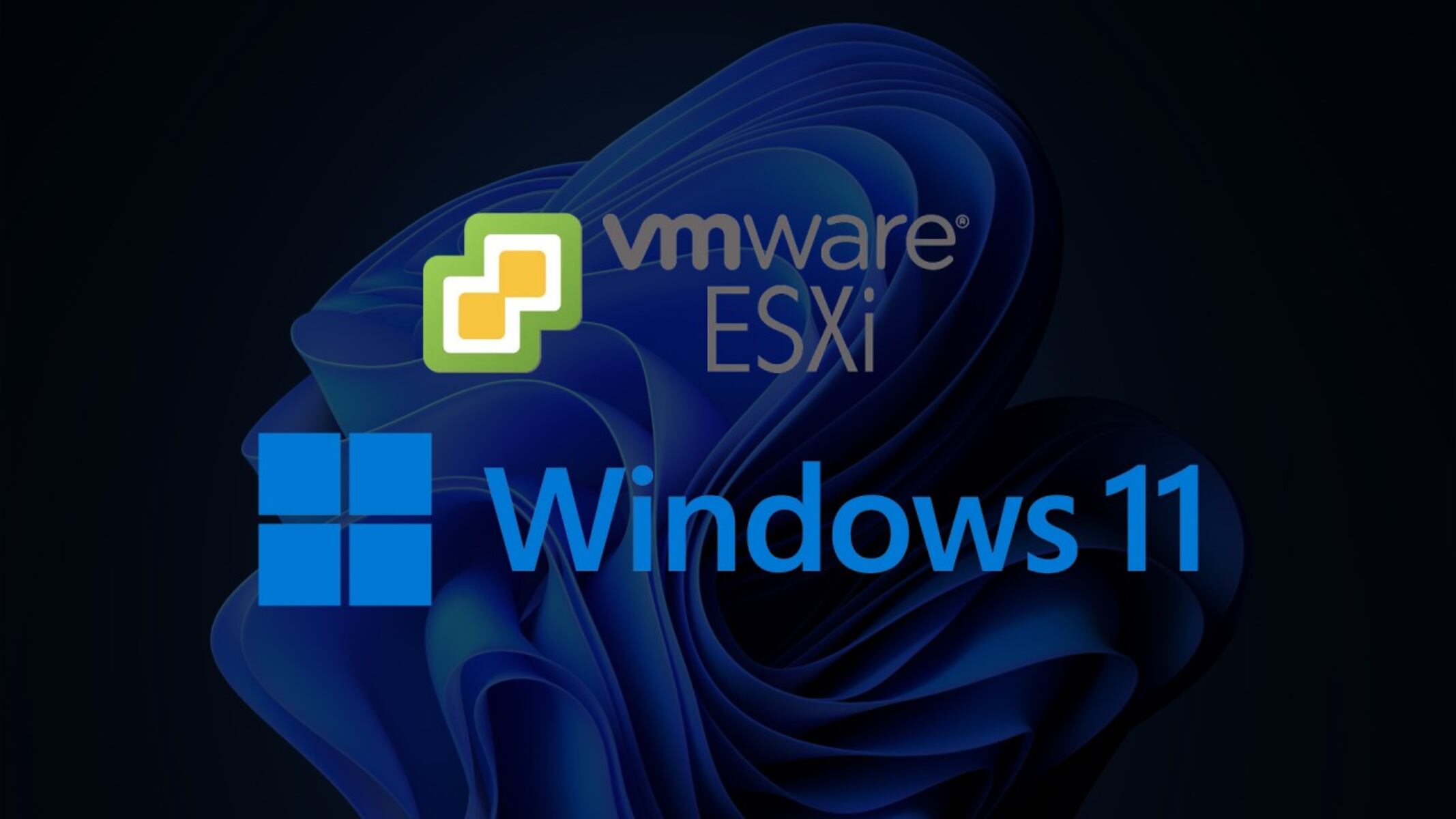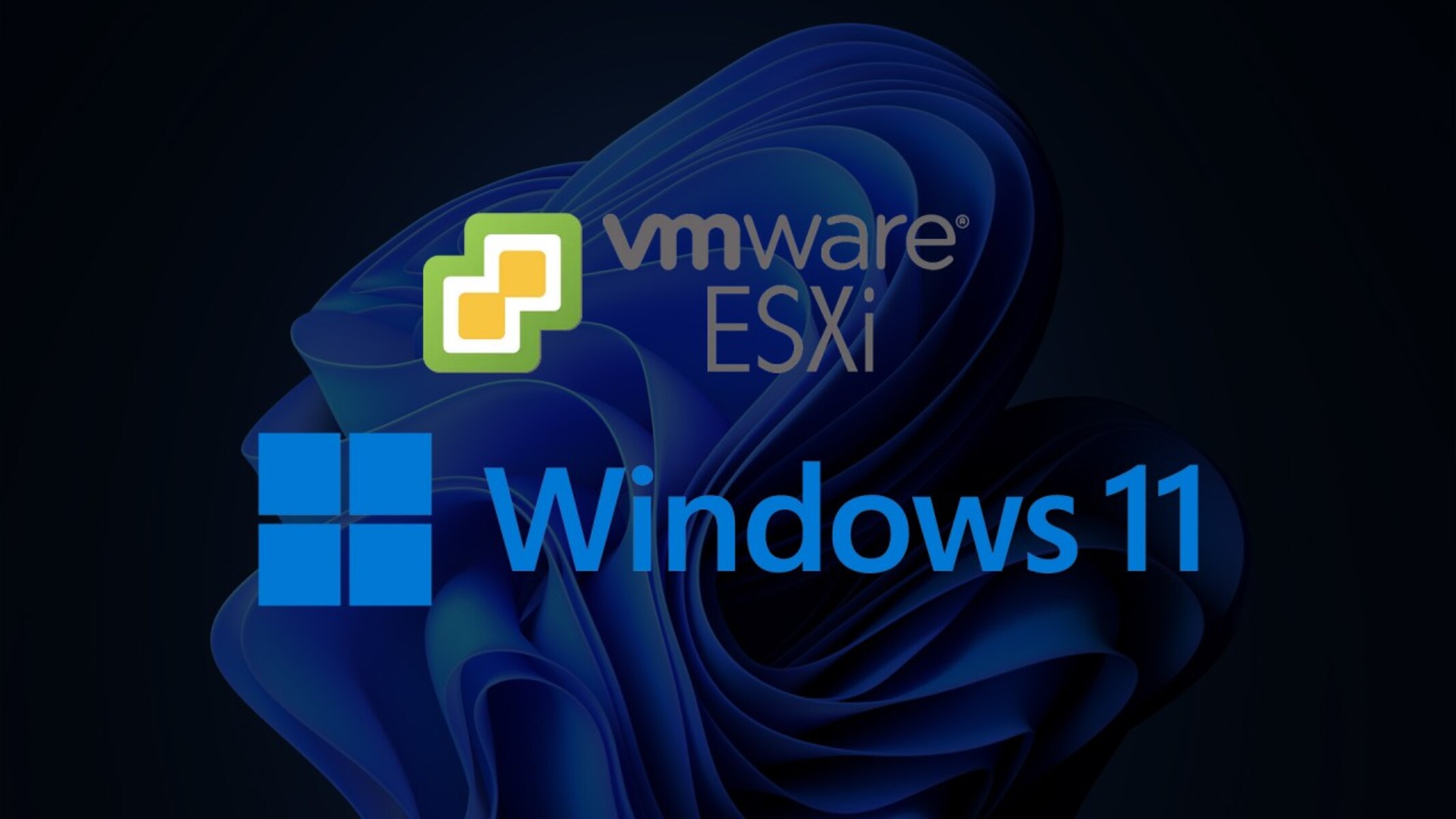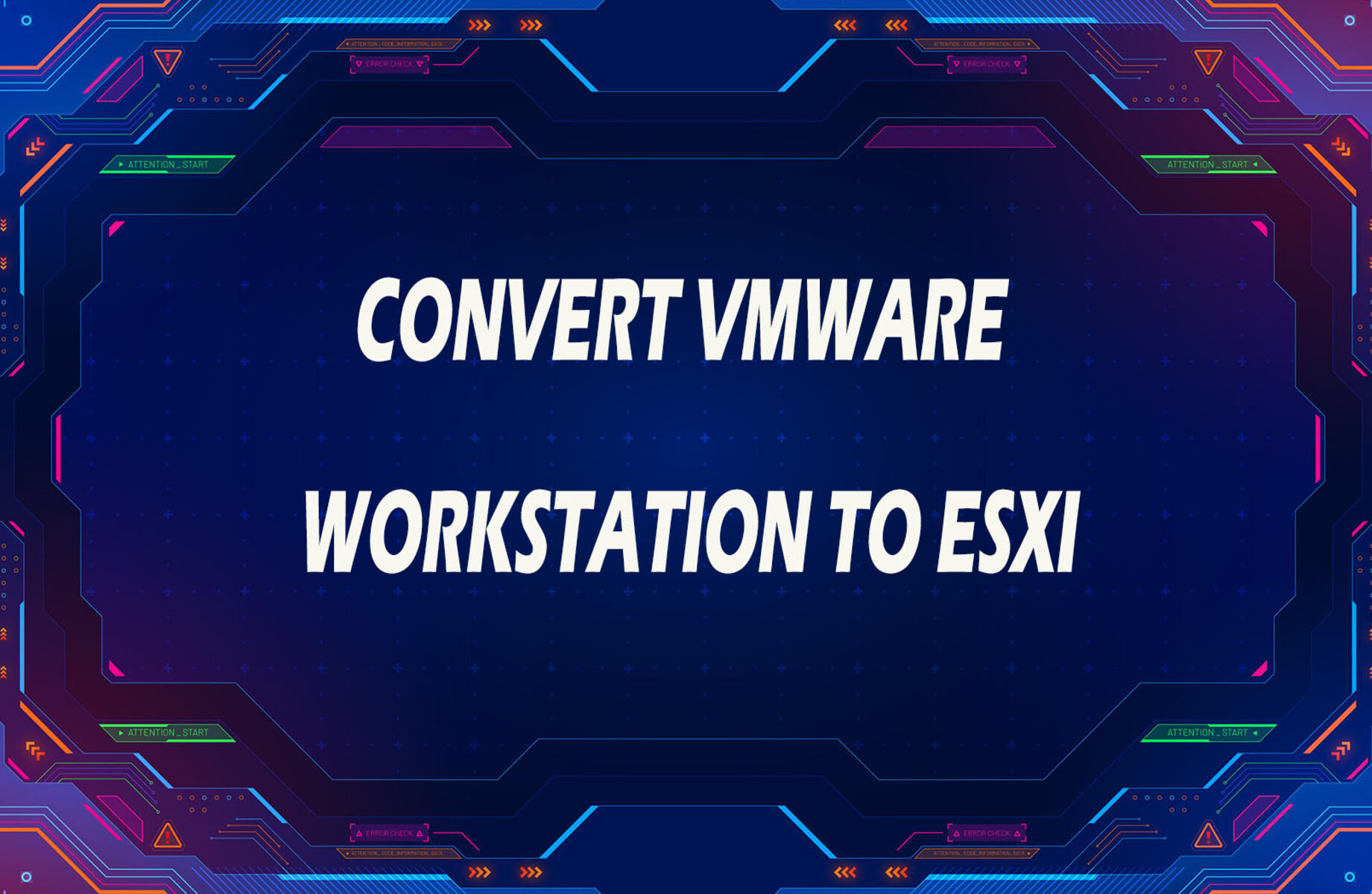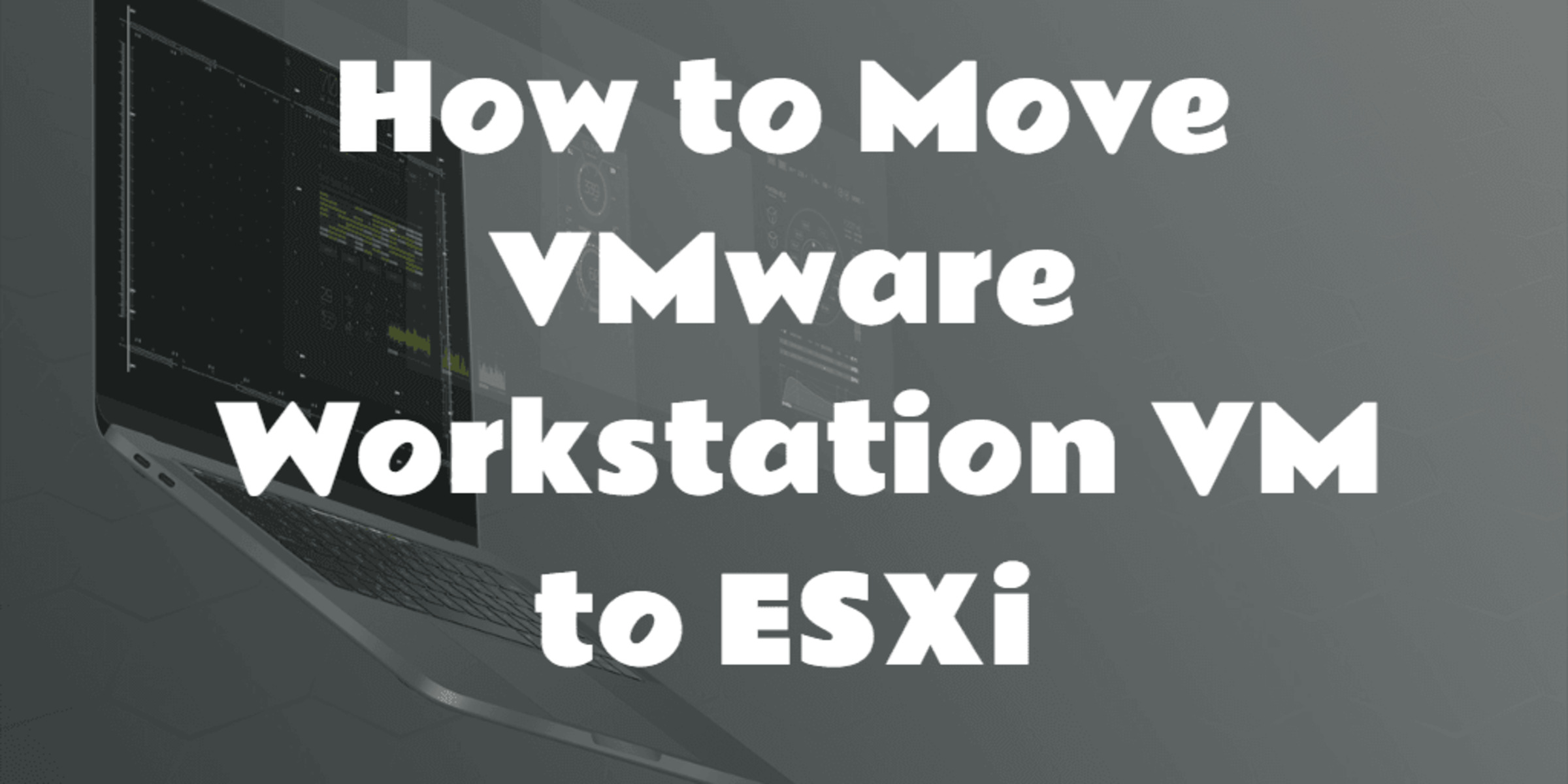Introduction
When it comes to ESXi server administration, having the right workstation is crucial for efficient and effective management. While there are many options available, one that stands out as the preferred choice for many IT professionals is a Windows workstation. In this article, we will explore the reasons why Windows workstation is widely used for ESXi server administration.
Windows workstation offers a user-friendly interface that makes ESXi server administration a breeze. With its intuitive design and familiar layout, even novice users can quickly grasp the basics of server management. The well-organized menus, toolbars, and task panes provide easy access to the various ESXi server settings and configurations, ensuring a seamless experience for administrators.
Another advantage of using a Windows workstation for ESXi server administration is the extensive range of compatible software available. Windows has a vast library of applications specifically designed for server management. Whether it’s monitoring tools, virtualization software, or backup solutions, you can find a wide array of options that perfectly align with your needs.
Integration with Active Directory is another compelling reason to choose a Windows workstation for ESXi server administration. Active Directory is a comprehensive and widely used directory service by Microsoft. By leveraging the integration between Active Directory and Windows workstation, administrators can streamline user management, authentication, and access control for ESXi servers.
Security is of utmost importance when it comes to managing servers, and Windows workstation offers robust security features. The built-in Windows Defender helps protect against malware and other security threats, ensuring the integrity and confidentiality of the ESXi server environment. Additionally, Windows workstation allows administrators to implement strict access controls, audit logs, and encryption protocols to safeguard critical data.
Windows workstation provides advanced networking capabilities, which is crucial for managing ESXi servers. It supports a wide range of networking protocols and technologies, enabling seamless communication between the workstation and the servers. This ensures efficient data transfer, remote management, and troubleshooting, making it easier for administrators to handle any network-related tasks.
Scalability and performance are essential factors to consider when choosing a workstation for ESXi server administration. Windows workstations are designed to handle demanding workloads efficiently. With support for multi-core processors, ample memory, and high-speed storage devices, they can provide the necessary resources and processing power to manage multiple ESXi servers simultaneously.
Windows workstation benefits from a rich ecosystem of third-party tools and plugins. Whether it’s specialized monitoring utilities, performance optimization software, or custom scripts, you can find a wealth of resources developed by the vibrant Windows community. These tools can further enhance the capabilities of the workstation and provide additional functionalities specific to ESXi server administration.
Easy-to-use interface
One of the primary reasons why the Windows workstation is preferred for ESXi server administration is its easy-to-use interface. The intuitive design and familiar layout make it accessible for both experienced administrators and those new to server management.
Windows workstation provides a well-organized interface, with menus, toolbars, and task panes that are logically arranged and easy to navigate. The graphical user interface (GUI) is designed to simplify the process of interacting with ESXi servers and performing management tasks. With just a few clicks, administrators can access various settings, configurations, and performance metrics, making it effortless to monitor and manage server resources.
The simplicity of the Windows workstation interface also contributes to a reduced learning curve. Administrators can quickly grasp the basics of ESXi server administration, even without extensive prior knowledge. The consistent design elements and intuitive navigation ensure that users can easily locate the options they need to perform specific actions, enhancing productivity and efficiency.
Furthermore, the Windows workstation’s interface is highly customizable, allowing administrators to tailor the layout according to their preferences and workflow. Dockable panels, customizable toolbars, and personalized layouts ensure that users can create an environment that suits their specific needs. This flexibility enhances usability and streamlines tasks, as administrators can arrange the interface to prioritize frequently used features and hide unnecessary ones.
Windows workstation also provides visual cues and tooltips that help users understand the functionalities of different features. This assists in minimizing errors and ensures that administrators can perform actions with confidence. The interface is designed to provide clear and concise feedback, making it easier to interpret and respond to status updates, warnings, and error messages.
Additionally, the Windows workstation interface is consistent across different versions and iterations, ensuring a seamless experience for administrators. Whether working on Windows 7, Windows 10, or any other compatible version, the interface remains familiar and cohesive, reducing the need for extensive retraining when upgrading or switching workstations.
In summary, the easy-to-use interface of Windows workstation simplifies ESXi server administration tasks. Its intuitive design, accessibility, customization options, and consistent experience contribute to a seamless workflow and increased productivity for administrators.
Wide range of compatible software
Another significant advantage of using a Windows workstation for ESXi server administration is the extensive range of compatible software available. Windows has a vast library of applications and tools specifically designed for server management, making it an ideal platform for ESXi server administration.
When it comes to monitoring and managing ESXi servers, there are various software solutions available that cater to different needs and preferences. These tools offer features such as real-time performance monitoring, resource allocation optimization, virtual machine management, and comprehensive reporting. Administrators can choose from a wide array of options based on their specific requirements.
Virtualization software, such as VMware vSphere and Microsoft Hyper-V, is readily compatible with Windows workstations. These tools provide robust virtualization capabilities, allowing administrators to create, manage, and monitor virtual machines efficiently. With advanced features like live migration, resource pooling, and high availability, these software solutions enhance the flexibility and scalability of ESXi server environments.
Backup and disaster recovery software is another critical aspect of ESXi server administration. Windows workstations support a multitude of backup solutions that enable administrators to protect critical data and ensure business continuity. With features like full system backups, incremental backups, and automated scheduling, these software solutions offer peace of mind and facilitate quick recovery in the event of a disaster.
Furthermore, Windows workstations are compatible with a range of deployment and configuration management tools. These tools assist administrators in automating the setup, configuration, and deployment of ESXi servers. They streamline repetitive tasks, ensure consistency across multiple servers, and simplify the overall management process.
Windows workstation also integrates seamlessly with scripting languages such as PowerShell, providing administrators with a powerful scripting environment. PowerShell allows for automation of various administrative tasks, enabling administrators to efficiently manage ESXi servers at scale. The extensive library of PowerShell cmdlets and scripts available for ESXi server administration further enhances productivity and flexibility.
Additionally, Windows workstation is compatible with various system monitoring and alerting tools. These tools provide real-time insights into the health and performance of ESXi servers, allowing administrators to proactively address issues before they escalate. With customizable notifications, detailed performance metrics, and historical data analysis, these software solutions empower administrators with the information needed to optimize server performance.
In summary, the wide range of compatible software available for Windows workstations makes it an excellent choice for ESXi server administration. From virtualization software to backup solutions, deployment tools, scripting environments, and system monitoring tools, administrators have access to a diverse selection of applications that cater to their specific needs and enhance the management of ESXi servers.
Integration with Active Directory
Integration with Active Directory is another compelling reason why a Windows workstation is widely used for ESXi server administration. Active Directory is Microsoft’s comprehensive directory service, offering centralized management of user accounts, permissions, and access control. When combined with a Windows workstation, it provides a seamless and efficient way to manage ESXi servers.
With Active Directory integration, administrators can leverage their existing user accounts and permissions for ESXi server administration. This eliminates the need to create separate credentials for each administrator, simplifying the authentication process and enhancing security. Administrators can log in to the Windows workstation using their Active Directory credentials, and the workstation will seamlessly authenticate them for server management tasks.
Active Directory’s group-based access control makes it easy to assign and manage permissions for ESXi servers. Administrators can create Active Directory security groups, add users to those groups, and then assign specific permissions to those groups. This centralized approach to access control ensures consistency and makes it simple to grant or revoke permissions as needed.
Furthermore, Active Directory integration enables administrators to enforce password policies and account lockouts, ensuring that ESXi server administration follows the organization’s security guidelines. Password complexity requirements, password expiration, and account lockout settings can all be controlled through Active Directory, providing an additional layer of security for ESXi servers.
Active Directory’s organizational units (OUs) can also be leveraged to organize and manage ESXi servers based on geographical locations, departments, or any other desired criteria. Administrators can create OUs and move ESXi servers into them, which simplifies administration by allowing for targeted application of group policies, resource allocations, and configurations.
Moreover, Active Directory integration facilitates the seamless integration of ESXi servers into the broader network infrastructure. Windows workstations can access Active Directory-integrated features, such as centralized domain-based management tools, which provide enhanced management capabilities for ESXi servers. This integration streamlines the management process and promotes a cohesive and unified network environment.
In summary, the integration of a Windows workstation with Active Directory offers numerous advantages for ESXi server administration. From simplified authentication and access control to centralized management, password policies, and OU-based organization, Active Directory integration enhances efficiency, security, and overall management capabilities.
Robust security features
Security is a top priority when it comes to managing ESXi servers, and Windows workstations offer robust security features that make them an ideal choice for ESXi server administration. With built-in security measures and customizable options, Windows workstations provide administrators with the tools they need to protect the integrity and confidentiality of their ESXi server environments.
One of the key security features of Windows workstations is the built-in Windows Defender. As a powerful antivirus and antimalware solution, Windows Defender helps protect against a wide range of security threats, including viruses, spyware, and ransomware. Its real-time scanning and automatic threat detection keep ESXi servers safeguarded from malicious software, reducing the risk of compromise or data breaches.
Windows workstations also offer various access control mechanisms to enforce strict security protocols. Administrators can implement user account controls, such as user access levels, strong password requirements, and account lockouts, ensuring that only authorized personnel can access and modify ESXi servers. The ability to enforce security policies through Group Policy further enhances the security posture of ESXi server environments.
Furthermore, Windows workstations support advanced encryption protocols to secure data at rest and during transmission. Administrators can take advantage of tools like BitLocker Drive Encryption to encrypt the hard drives on the workstation, ensuring that sensitive data stored on local drives remains protected even in case of theft or unauthorized access. Additionally, protocols like Secure Socket Layer (SSL) and Transport Layer Security (TLS) can be utilized to secure communication channels between the workstation and ESXi servers.
Windows workstations also provide auditing and logging capabilities, allowing administrators to monitor and track any suspicious activities or access attempts. Detailed event logs provide a comprehensive view of system activities, enabling administrators to identify potential security breaches or unauthorized changes to ESXi servers. By analyzing these logs, administrators can respond promptly to security incidents and take necessary actions to mitigate risks.
Moreover, Windows workstations offer integration with third-party security software. Administrators have the flexibility to choose and deploy additional security solutions, such as firewalls, intrusion detection systems, and security information and event management (SIEM) tools, to enhance the overall security of ESXi server environments. The robust ecosystem of third-party security vendors ensures that administrators can find the most suitable solutions for their specific needs.
In summary, Windows workstations offer a range of robust security features that contribute to the protection of ESXi server environments. From built-in antivirus and antimalware protection to access control mechanisms, encryption protocols, auditing capabilities, and integration with third-party security software, Windows workstations provide administrators with the necessary tools to maintain the security and integrity of their ESXi server infrastructure.
Advanced networking capabilities
When it comes to ESXi server administration, advanced networking capabilities are a crucial factor, and Windows workstations offer robust networking features that make them an excellent choice for managing ESXi servers. With support for a wide range of networking protocols and technologies, Windows workstations provide administrators with the necessary tools to efficiently handle networking tasks.
Windows workstations support industry-standard networking protocols like TCP/IP, UDP, and ICMP, ensuring seamless communication between the workstation and ESXi servers. This broad protocol support allows administrators to easily configure network settings, troubleshoot connectivity issues, and monitor network performance.
Additionally, Windows workstations offer advanced networking capabilities, including Virtual LANs (VLANs) and Network Address Translation (NAT). VLANs allow administrators to segment their network infrastructure and create isolated networks within a physical network, providing enhanced security and efficiency. NAT, on the other hand, allows multiple devices to share a single external IP address, enabling administrators to optimize their network resources and improve network performance.
Windows workstations also provide support for Virtual Private Networks (VPNs), which allows administrators to establish secure connections to ESXi servers over public networks. By leveraging VPN technology, administrators can securely manage their ESXi infrastructure from remote locations, ensuring that sensitive data and management tasks are protected from unauthorized access.
Moreover, Windows workstations offer network monitoring tools that help administrators visualize and analyze network traffic. By utilizing built-in tools like Resource Monitor or third-party software, administrators can monitor network utilization, identify bottlenecks, and troubleshoot performance issues. These monitoring capabilities allow for proactive management and optimization of network resources.
Windows workstations are also compatible with network management tools that provide centralized management and configuration of network devices, such as switches and routers. These tools streamline network administration tasks, allowing administrators to easily provision VLANs, configure Quality of Service (QoS) settings, and manage network policies. This centralized approach simplifies network management and ensures consistency across the ESXi server environment.
Additionally, Windows workstations support Remote Desktop Protocol (RDP), which allows administrators to remotely access and manage ESXi servers. RDP provides a secure and efficient way to administer ESXi servers from a Windows workstation, regardless of the physical location of the servers. This remote management capability enhances flexibility and facilitates effective server administration without the need for physical proximity.
In summary, Windows workstations offer advanced networking capabilities that enhance ESXi server administration. With support for a wide range of protocols, VLANs, NAT, VPNs, network monitoring tools, centralized management, and remote access, Windows workstations provide administrators with the necessary tools to efficiently manage the networking aspects of their ESXi server infrastructure.
Scalability and performance
Scalability and performance are crucial factors to consider when choosing a workstation for ESXi server administration. Windows workstations excel in these areas, providing administrators with the necessary resources and capabilities to handle the demands of managing multiple ESXi servers.
Windows workstations are designed to support demanding workloads and handle resource-intensive tasks efficiently. With support for multi-core processors, ample memory, and high-speed storage devices, they can deliver the performance required for ESXi server administration. Administrators can seamlessly launch multiple management tools, access virtual machines, and perform resource-intensive tasks without experiencing significant performance degradation.
Windows workstations offer the ability to manage multiple ESXi servers simultaneously, enabling administrators to streamline their workflow and improve productivity. With powerful processing capabilities and abundant memory, administrators can run multiple instances of management software, access multiple consoles, and monitor numerous ESXi servers in parallel. This scalable approach allows for efficient administration and reduces the time required to manage complex ESXi server environments.
Additionally, Windows workstations can handle a large number of virtual machines (VMs) without compromising performance. Virtualization tools like VMware vSphere Client or Microsoft Hyper-V Manager integrate seamlessly with Windows workstations, providing administrators with a comprehensive platform to manage and monitor VMs. This scalability allows administrators to scale their ESXi server infrastructure and easily accommodate the growing demands of their organization.
Furthermore, Windows workstations support features like hot adding and removing of virtual hardware, allowing administrators to adjust resources allocated to VMs without disrupting operations. This flexibility enables efficient resource management, allowing administrators to optimize performance based on real-time needs and allocate resources dynamically to address VM workload fluctuations.
Windows workstations also benefit from the extensive compatibility and optimization with ESXi server hardware. As Windows is a widely-used operating system, hardware vendors often ensure their products are compatible and optimized for Windows workstations. This compatibility ensures seamless integration and enables administrators to take advantage of hardware advancements, such as improved CPU performance or enhanced I/O capabilities, to further enhance the scalability and performance of their ESXi server infrastructure.
In summary, Windows workstations provide the scalability and performance required for effective ESXi server administration. With support for demanding workloads, the ability to manage multiple servers simultaneously, scalability for large numbers of virtual machines, and optimization with ESXi server hardware, Windows workstations offer administrators the necessary resources and capabilities to efficiently manage and optimize their ESXi server environments.
Rich ecosystem of third-party tools and plugins
Windows workstations offer a rich ecosystem of third-party tools and plugins, making them an attractive choice for ESXi server administration. This extensive network of software solutions enhances the functionality and flexibility of the workstation, allowing administrators to customize their workflow and access a wide range of specialized tools.
The Windows community has developed a plethora of third-party tools specifically designed for ESXi server administration. These tools cover a wide range of functionalities, including advanced monitoring, performance optimization, backup and recovery, automation, and reporting. Administrators can choose from an array of options based on their specific needs and preferences, empowering them to tailor their ESXi server management experience to their liking.
Monitoring tools, for example, offer enhanced visibility into the performance and health of ESXi servers. These tools provide real-time monitoring of system resources, virtual machine performance, network utilization, and other key metrics. With customizable dashboards, detailed reports, and alerting mechanisms, administrators can effectively manage and troubleshoot their ESXi server infrastructure.
Performance optimization software is another valuable component of the Windows workstation ecosystem. These tools help administrators identify and resolve performance bottlenecks, ensure resource allocation efficiency, and optimize the overall performance of ESXi servers. By utilizing these tools, administrators can proactively address performance issues, mitigate potential risks, and improve the user experience for virtual machines hosted on the ESXi servers.
Backup and recovery solutions are also available as third-party options for Windows workstations. These tools provide comprehensive data protection for ESXi servers, offering features such as incremental backups, disaster recovery planning, and automated scheduling. Administrators can choose from a variety of backup options, including cloud-based solutions or on-premises storage, to meet their specific data protection requirements.
Automation is another area where third-party tools and plugins add significant value to ESXi server administration. Windows workstations support scripting languages like PowerShell and offer a vast library of PowerShell cmdlets and scripts developed by the Windows community. These resources allow administrators to automate routine tasks, such as provisioning virtual machines, configuring networking settings, or managing storage, saving time and ensuring consistency in server administration.
Furthermore, the Windows workstation ecosystem includes reporting tools that assist administrators in extracting and analyzing data from ESXi servers. These tools can generate customizable reports on server performance, resource usage, VM sprawl, and more. The ability to generate insightful reports helps administrators make informed decisions, optimize server utilization, and respond to management queries or compliance requirements.
In summary, the rich ecosystem of third-party tools and plugins available for Windows workstations greatly enhances the capabilities of ESXi server administration. With specialized software solutions for monitoring, performance optimization, backup and recovery, automation, and reporting, administrators have the flexibility to tailor their workstation to their specific needs and access the tools required to effectively manage their ESXi server environment.
Conclusion
In conclusion, a Windows workstation proves to be an excellent choice for ESXi server administration due to several key factors. The easy-to-use interface of a Windows workstation provides a familiar and intuitive environment for both experienced administrators and those new to server management. Additionally, the wide range of compatible software available ensures that administrators have access to all the necessary tools for efficient ESXi server administration.
The integration of a Windows workstation with Active Directory allows for seamless user management, authentication, and access control, simplifying the administration of ESXi servers. Windows workstations also offer robust security features, including built-in antivirus and antimalware protection, access control mechanisms, encryption protocols, and auditing capabilities to safeguard ESXi server environments.
Advanced networking capabilities enable administrators to configure, troubleshoot, and optimize network settings, ensuring smooth communication between the workstation and ESXi servers. Windows workstations also provide scalability and high performance, enabling administrators to efficiently manage multiple ESXi servers and handle resource-intensive tasks.
Lastly, the rich ecosystem of third-party tools and plugins available for Windows workstations further enhances the functionality and flexibility of ESXi server administration. From specialized monitoring and performance optimization tools to backup and recovery solutions, automation scripts, and reporting utilities, administrators have a wealth of options to tailor their workstation to their specific needs.
Overall, a Windows workstation offers a comprehensive and feature-rich platform for ESXi server administration. With its user-friendly interface, wide range of compatible software, integration with Active Directory, robust security features, advanced networking capabilities, and extensive ecosystem of third-party tools, administrators can efficiently and effectively manage their ESXi server environments.

























